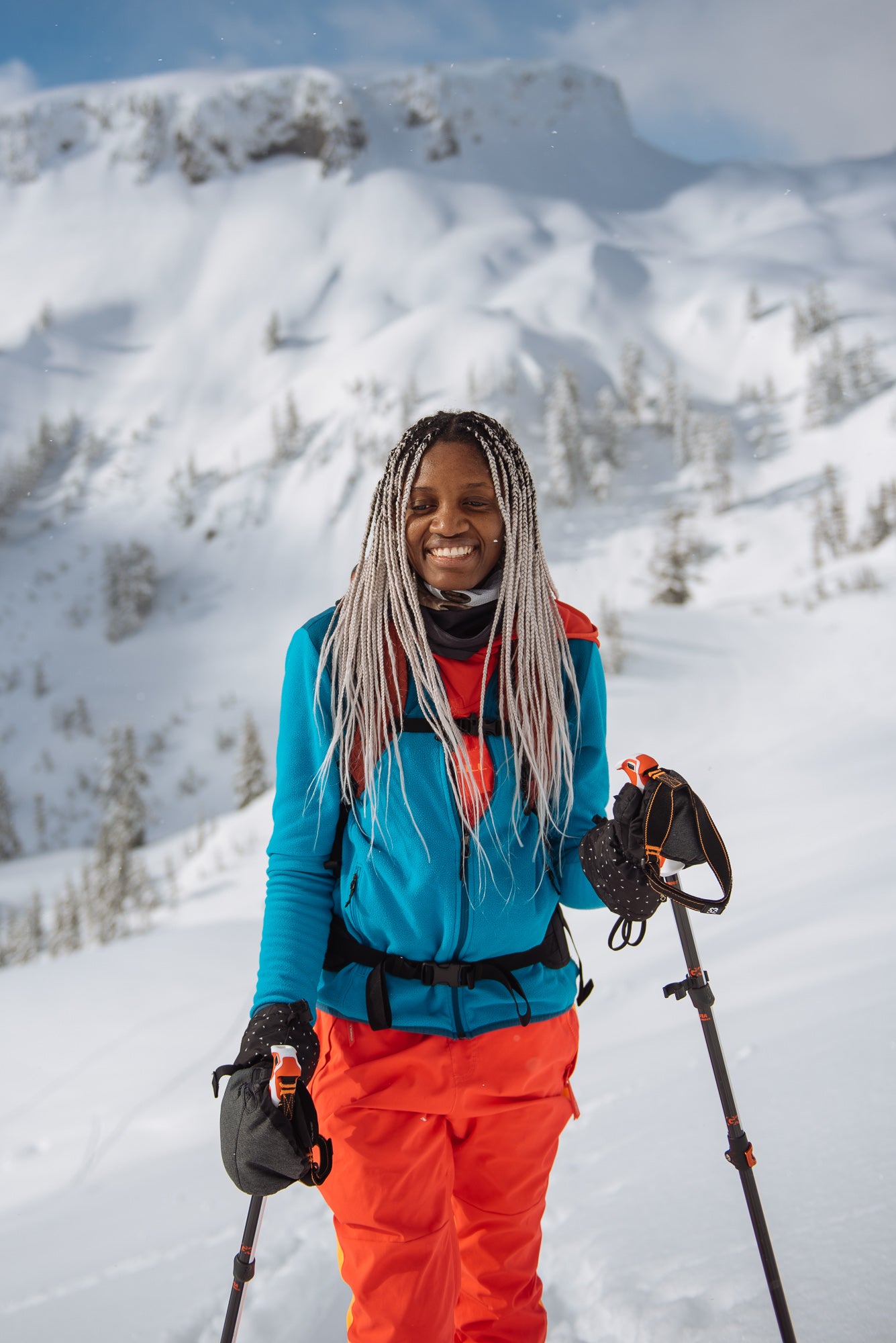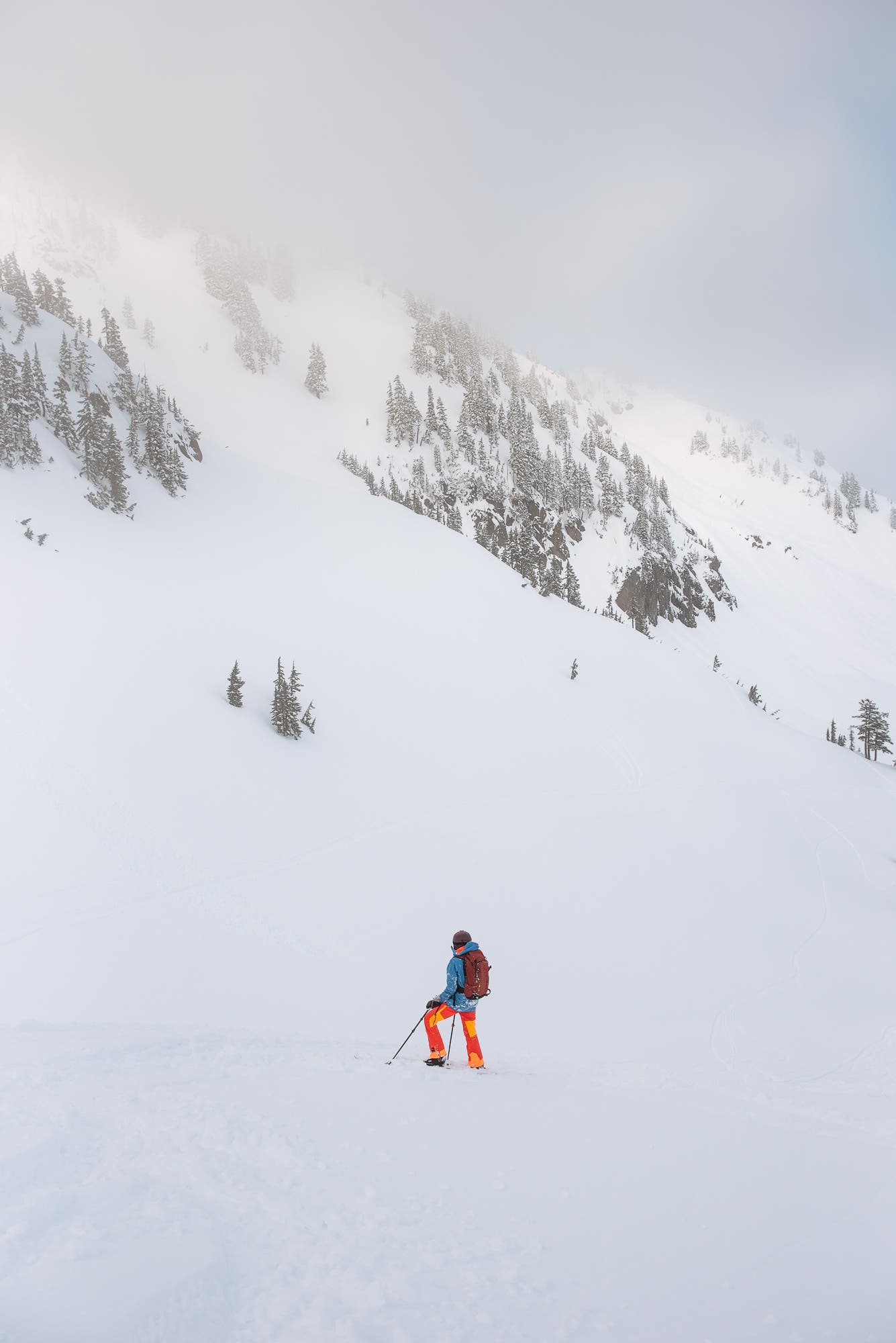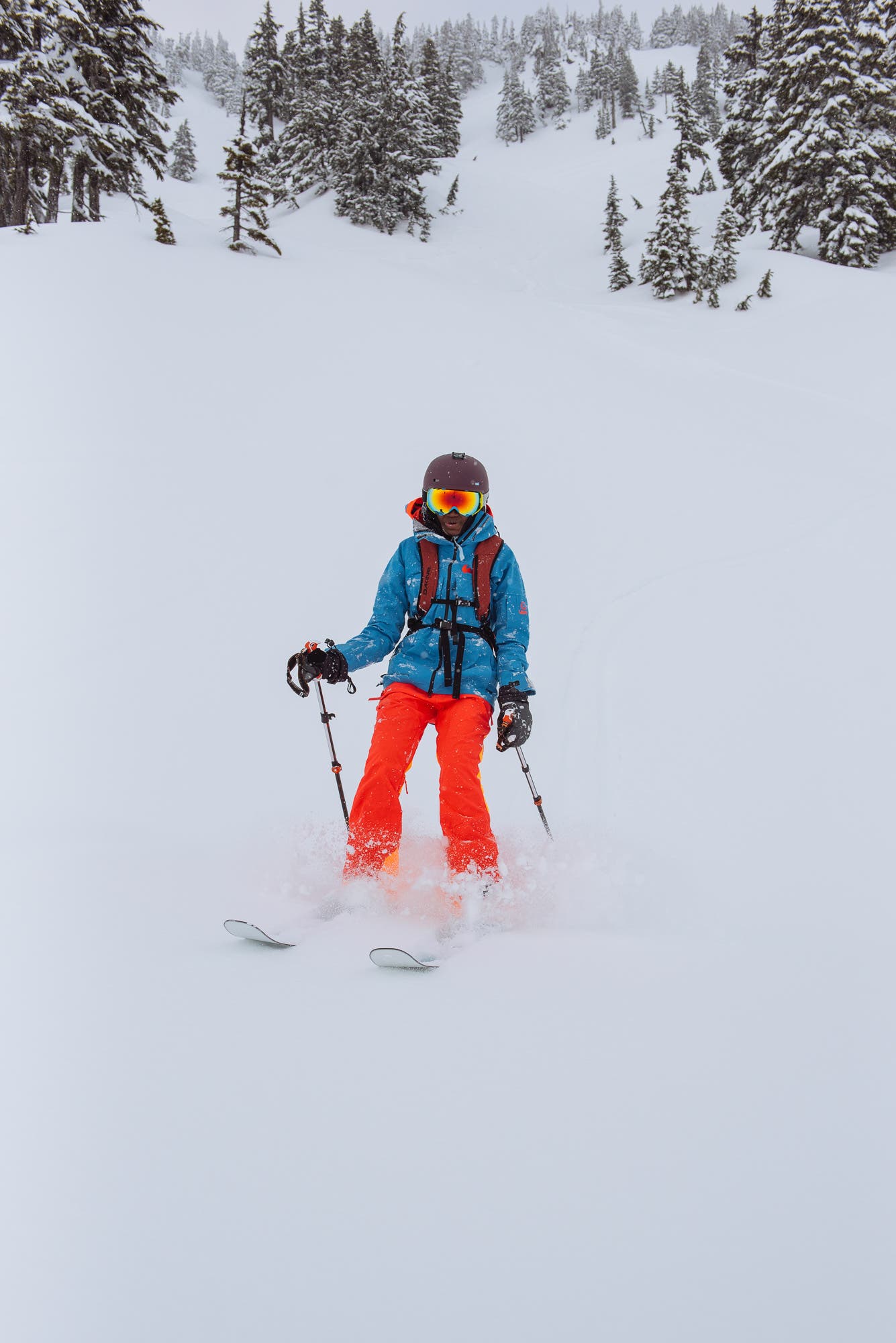Judith Kasiama: Founder of Colour the Trails

Photo Credit: Pavel Boiko Photography
An entrepreneur and advocate for diversity in outdoor spaces, Kasiama has begun to expand her reach into the skiing world. She started skiing in January 2019, after seeing an advertisement for “Never Ever Days” at Whistler Blackcomb, where beginners can get a lift ticket, rentals, and take a lesson for $25.
“I was horrible at it. The bunny hill felt like a giant hill. I thought it was going to fall off the mountain,” says Kasiama. “My first experience was actually horrible. I was super intimidated by the sport, I couldn’t get even a pizza correctly or anything.”
But don’t let Kasiama’s humbleness fool you, she doesn’t quit easily. Monday evenings were spent practicing at a local Vancouver hill that offered women’s ski nights. The smaller mountains felt quieter, creating an ideal space to master turns and gain confidence.

Fast forward to the winter of 2020, and Kasiama has already ventured out into the backcountry. On a trip to Mount Baker, skinning beneath an overcast sky on fresh snow, Kasiama says it was perfect and therapeutic. In the mountains, “there’s a sense of peace and freedom where you don’t have to worry about a lot of things, you just are focusing all of your mental energy into just safely coming down through that flow.”
Related: Independents Day – Mt. Baker
Kasiama’s perseverance and strength are electric. Her quick progression as a skier is notable, as is her work making the outdoors an inclusive space—redefining who rides lifts and breaks trail for the skin track. As a woman of color and refugee from the Democratic Republic of Congo, she has worked hard to create a space for BIPOC in the outdoor world. She is the founder of Colour the Trails, a community-based organization that coordinates events for people of color to try outdoor sports in the Vancouver area, including skiing.
The outdoor industry has historically excluded the BIPOC community. Open up any copy of SKI Magazine, for example, and it is easy to see that advertising campaigns, outdoor spaces, and especially the ski world is disproportionately skewed towards white representation.
“For the past couple years it’s been a bit intimidating especially in skiing because when I go out on the slopes, I’m usually just the only Black person, and I don’t see other Black people,” says Kasiama. The Canadian Ski Council puts the percentage of skiers who are white at about 88% to 92%.
“A lot of people have been excluded from this sport just because of how it’s marketed,” says Kasiama. She sees a huge opportunity for resorts to grow their skier base by reaching out to and making the sport accessible to people of color. To her, a lack of outreach and financial barriers often define how athletes are identified in the ski and outdoor world.

Kasiama explained in a recent Instagram post, “As a Black woman joining the outdoor community. There’s a sense of imposter syndrome. The idea that there’s a distinction between ‘real’ athletes and non- athletes is rooted in privilege. I might not run a marathon under two hours, but the fact that I ran a marathon, is an achievement in its own right. I was an athletic child growing up, my single mother could not afford to pay for a certain sport, so I stayed at low-cost sports, such as basketball, track and field, and cross country. So, does my financial barrier, lack of access makes me not athletic enough?”
Imposter syndrome can manifest in many ways, including across gender and racial lines. Furthering and interacting with feelings of imposter syndrome come the insider tips of the ski world that are difficult to learn if you have no mentors.
“If you’re a skier or snowboarder you know the rules, but those of us on the outside who are coming don’t know all these rules,” says Kasiama (These “rules” include when and where to buy the cheapest passes, how to learn, where to learn, and where to buy affordable gear can make a difference for anyone starting out). This past winter, Colour the Trails held a Colour the Slopes day. Several attendees progressed and wanted to continue, so Kasiama helped them find cheap gear online.
Kasiama continues to speak with the Canadian Ski Council to bring diversity and inclusion to resorts. She is also working with the Canadian Ski Council to provide passes, gear, and other resources for Colour the Trails to help get participants on the snow.
This coming winter, Kasiama hopes to get more skiers out with Colour the Trails, breaking norms and slashing through powder all the way.
Related: The Color of Skiing